Piriformis Syndrome management is no easy feat, but still doable. Especially since this syndrome is a commonly associated condition with Pudendal Neuralgia that can lead to persistent pain, numbness, and tingling sensations in the buttocks, radiating down to the legs. It occurs when the piriformis muscle, located in the buttocks near the top of the hip joint, irritates or compresses the sciatic nerve.
The latter is a rare condition, with an estimated prevalence of 0.05-1% in the general population, more common in women than in men, with a ratio of about 2:1. Piriformis Syndrome, on the other hand, is also more common in women, but at a ratio of about 3:1.
Here, we’ll explore Piriformis Syndrome management, the beneficial exercises and stretches to alleviate symptoms, and exercises to avoid aggravating the condition.
Understanding Piriformis Syndrome Management: A Comprehensive Overview
Piriformis syndrome is a condition that can cause significant discomfort and hinder daily activities. This condition stems from an irritation of the piriformis muscle, a small, band-like muscle nestled in the buttocks. The piriformis muscle plays a crucial role in lower body movement by stabilizing the hip joint and facilitating the lifting and rotation of the thigh away from the body. This is why you need
When the piriformis muscle becomes irritated, it can lead to a range of distressing symptoms, including discomfort, tingling, and numbness. These symptoms typically manifest in the buttocks and can extend along the path of the sciatic nerve, which descends from the lower thigh into the leg.
Piriformis syndrome should not be underestimated, as it has the potential to significantly affect an individual’s daily life and overall quality of life. Therefore, it is essential to promptly address and manage this condition to alleviate its symptoms and prevent further complications.
Aside from Pudendal Neuralgia, it’s also often misdiagnosed or confused with other conditions due to the similarity of symptoms. Therefore, seeking proper medical evaluation and diagnosis is critical to ensure appropriate treatment and relief for those affected by this condition.
Let’s run through some common causes of Piriformis Syndrome:
Causes of Piriformis Syndrome
The most common causes of Piriformis Syndrome and even pudendal neuralgia are hard to pinpoint right away. Thankfully, there are exercises and stretches you can do to help with Piriformis Syndrome management as much as possible.
Piriformis Syndrome is muscle tightness or spasm of the piriformis muscle. There are numerous potential causes of this, including:
-
- Overuse, such as from running or cycling
- Trauma, such as a fall or car accident
- Anatomical variations, such as a narrow pelvis or thickened piriformis muscle
- Other medical conditions, such as arthritis or obesity
Now, let’s run through some common causes of Piriformis Syndrome:
Symptoms of Piriformis Syndrome
The most common symptom of Piriformis Syndrome is pain in the buttocks or hips that may radiate down the leg. Other symptoms may include:
-
-
- Numbness or tingling in the buttocks or leg
- Burning sensation in the buttocks or leg
- Difficulty sitting or walking
-
Treatment of Piriformis Syndrome
The treatment for Piriformis Syndrome depends on the severity of the condition. Conservative treatments such as rest, ice, compression, and elevation are often effective. Other treatments may include:
-
-
-
- Physical Therapy
- Medication
- Injection therapy
- Surgery
- Exercise and Stretches
-
-
Effective Piriformis Syndrome Exercises
There are a lot of effective Piriformis Syndrome exercises that can also help patients, and they often come for free. Exercise and stretches are part of those.
Piriformis Syndrome management can be challenging because it is characterized by the irritation of the piriformis muscle, which can lead to discomfort, tingling, and numbness in the buttocks and along the path of the sciatic nerve. As such, proper management of this condition is crucial for alleviating symptoms and improving the quality of life.
One approach to Piriformis Syndrome management is through targeted exercises designed to strengthen the muscles and reduce muscle tightness.
Let’s see the most effective and easiest exercises you can begin with:
1. Clamshell Exercise
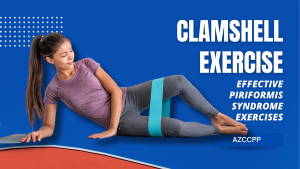
-
- Begin by lying on your side with your hips stacked and your knees bent at a 45-degree angle.
- Keep your feet together and lift your upper knee towards the ceiling while maintaining the position.
- Aim to perform 2-3 sets of 15 repetitions on each side.
The Clamshell exercise targets the piriformis muscle and its surrounding muscles, helping to improve muscle strength and flexibility in the affected area.
2. Piriformis Stretch
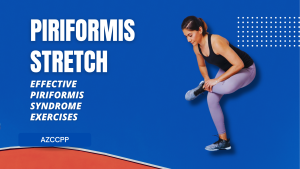
-
- Sit on the floor with your legs extended straight in front of you.
- Cross the affected leg over the other leg, bending it at the knee.
- Gently pull the knee of the affected leg towards the opposite shoulder until a gentle stretch is felt in the buttocks area.
- Hold this stretch for 30 seconds and repeat it three times on each side.
The Piriformis Stretch is effective in relieving muscle tightness and reducing tension in the piriformis muscle.
3. Bridge Exercise
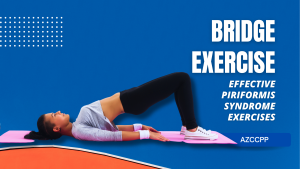
-
- Begin by lying on your back with your knees bent and your feet flat on the floor.
- Lift your hips towards the ceiling while squeezing the buttocks muscles.
- Hold the raised position for a few seconds and then gently lower your hips back to the floor.
- Aim to perform 2-3 sets of 10 repetitions.
The Bridge Exercise targets the gluteal muscles, which play a role in supporting the piriformis muscle, thereby assisting in its rehabilitation.
Engaging in these exercises as part of a comprehensive treatment plan can help with effective Piriformis Syndrome management. It’s essential to consult with a healthcare professional or physical therapist for a personalized exercise regimen and guidance, especially if you suspect you may be dealing with Piriformis Syndrome or a condition like Pudendal Neuralgia, which shares some similar symptoms.
These exercises, when performed correctly and regularly, can contribute to reducing pain and improving the overall well-being of individuals affected by Piriformis Syndrome.
Piriformis Syndrome Stretches
Stretching can help relieve the tightness and improve the flexibility of the piriformis muscle.
1. Supine Piriformis Stretch
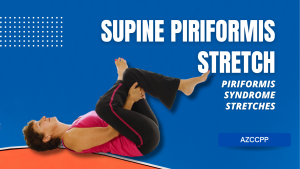
- Lie on your back with both feet flat and your knees bent.
- Place the ankle of your affected leg over the knee of your other leg.
- Pull the knee of the crossed leg towards the chest gently.
- Hold for 30 seconds and repeat 2-3 times on each side.
2. Seated Stretch
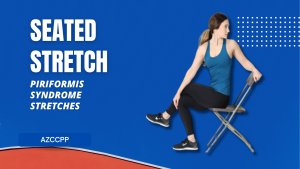
- Sit on a chair with the affected leg crossed over the knee of the other leg.
- Lean forward gently, keeping the back straight, until a stretch is felt in the buttocks.
- Hold for 30 seconds and repeat 2-3 times on each side.
3. Hip Extension Stretch

- On hands and knees, extend the affected leg straight back.
- Keep the knee straight and avoid arching the back.
- Perform 2-3 sets of 10 repetitions on each side.
Piriformis Syndrome Exercise to Avoid
While exercises and stretches are crucial, some might exacerbate the symptoms of piriformis syndrome. Activities that cause pain, involve vigorous leg movements, or put pressure on the piriformis muscle should generally be avoided.
- Deep Squats: Squatting too deep can place excessive strain on the piriformis muscle and irritate the sciatic nerve.
- High-Intensity Leg Workouts: Exercises involving heavyweights or high resistance can worsen inflammation and pain.
- Running on Uneven Surfaces: Running, especially on uneven terrain, can overwork the piriformis muscle and aggravate symptoms.
Read More About Pudendal Neuralgia Here!
Conclusion
Piriformis syndrome, though challenging, can be managed effectively with proper understanding, the right set of exercises, and lifestyle modifications. Incorporating gentle stretches and strengthening exercises can alleviate the symptoms and improve the quality of life. However, recognizing and avoiding movements and activities that can exacerbate the condition is equally important.
If the symptoms persist despite these measures, seeking professional medical advice is crucial to prevent further complications and to explore other therapeutic interventions.

